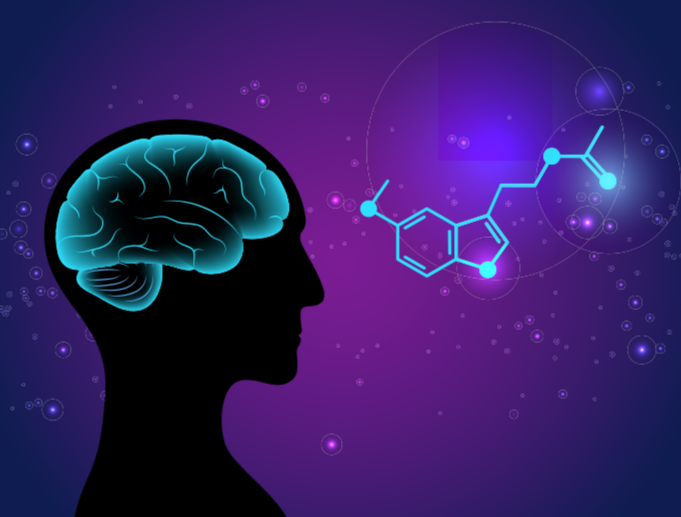
Over the last five years, melatonin has become one of the world’s most popular dietary supplements, with global sales topping $1.5 billion.
An endogenous neurohormone, melatonin also functions as an antioxidant, chemopreventive, and anti-inflammatory molecule. It is most commonly known for sleep promotion, but it has other clinical uses, including immune health support, adjunctive treatment for COVID-19, multiple sclerosis, infertility, and some types of cancer.
Not only are more people taking melatonin, they’re also taking it more regularly, at higher doses, and for longer periods of time. Research connecting melatonin with potential benefits in autism and ADHD, has prompted a surge in use by children—a phenomenon that prompted the Centers for Disease Control and Prevention (CDC) to issue a report last summer on the safety and impact of melatonin in this population.
Along with the scientific data, misinformation about melatonin is also on the rise throughout social media and even among health professionals, raising uncertainty and more questions from consumers and patients on uses, dosing, sources, forms, safety, and quality. This article will discuss these subjects along with the latest research and clinical applications for this unique compound.
A Unique Antioxidant
Melatonin is one of the most potent and ubiquitous antioxidants. What makes it unique relative to other antioxidants is that it is both water- and fat-soluble, making it more active in multiple physiological compartments, such as the selective areas like the brain.
One molecule of melatonin and its metabolites can scavenge up to 10 free radicals (Tan DX, et al. J Pineal Res. 2007), whereas a water-soluble antioxidant like vitamin C is limited in its scavenging activity. Because it is found in some of the most metabolically active tissues of the body, researchers have recently focused on melatonin’s role in mitochondrial health, aging, and development of cancer.
Presently, 99% of supplemental melatonin is synthetic. It is derived from chemical synthesis, often involving petrochemicals. With the trend towards sustainability, and wider demand for plant-derived foods and supplements, some novel phytomelatonin sources have come to market.
In addition to its antioxidant effects, melatonin also has anti-inflammatory properties, making it an important factor in the immune system.
Endogenous vs Exogenous
One of the most widely circulated pieces of misinformation about melatonin is the notion that endogenous production is adversely impacted by exogenous supplementation.
To the contrary, multiple studies going back to the late 1980s have shown that melatonin supplementation does not impact endogenous production (Zhdanova IV, et al. J Clin Endocrinol Metab. 2001; Matsumoto M, et al. J Pineal Res. 1997; Mallo C, et al. Acta Endocrinol (Copenh). 1988; Lemoine P, et al. Ther Clin Risk Manag. 2011; Lissoni P, et al. Recenti Prog Med. 1999).
If suppression of endogenous melatonin secretion was a real clinical issue, surely it would have been reported over the course of three decades’ worth of research, including studies of high-dose supplementation (up to 50 mg) in cancer patients.
Multiple studies going back to the late 1980s have shown that melatonin supplementation does not impact endogenous production.

However, we should not take this to mean that high-dose supplementation is without consequence. As Richard Wurtman—a leading melatonin researcher at Massachusetts Institute of Technology—reported in the 1990s, and many practitioners have observed since then, long-term use of high-dose melatonin can potentially reduce the sensitivity of receptor sites. This then creates a need for ever higher doses. In some cases, it can even result in a dependence on exogenous melatonin.
Once receptor sites are saturated, there may be a threshold beyond which the sensitivity of the receptors declines (Sweis D. Arch Dis Child Educ Pract Ed. 2005). So “more” is definitely not always better, when it comes to melatonin dosing.
Professor Russell J. Reiter, a University of Texas researcher who has published several hundred papers on melatonin, has suggested that exogenous melatonin may help increase endogenous cellular production of melatonin, at least in cancer cells, by removing metabolic blocks to its synthesis (Reiter RJ, et al. Melatonin Res. 2019).
Sources of Melatonin
Another question that requires some clarification is the matter of melatonin in food. On the internet, specifically on social media, you’ll find all sorts of statements suggesting that drinking tart cherry juice or eating a handful of nuts before bedtime will provide therapeutic levels of melatonin.
A simple calculation highlights the truth that the amounts of melatonin in food are relatively minuscule—they’re measured in nanograms or picograms per gram. It would take more than 800 cups of shelled walnuts or many thousands of cherries to get to an efficacious dose of melatonin.
Not only is the amount of melatonin in foods extremely low, but it is also highly variable, depending on growing conditions, plant cultivars, and processing methods.
There are several different sources of melatonin used in the dietary supplements available on the market. Historically, it was extracted from the pineal glands of animals. However, that practice has been curtailed due to the risk of prions and viral infections.
Presently, 99% of supplemental melatonin is synthetic. It is derived from chemical synthesis, often involving petrochemicals. There’s potential for dosing, quality, and adulteration issues. Researchers have identified up to 13 different contaminants in some melatonin products.
Breakthrough research from Henry Meissner, PhD, and colleagues has shown that a proprietary phytomelatonin complex commercially known as Herbatonin was superior to synthetic melatonin on several parameters.
Lauren Erland and Praveen Saxena at the University of Guelph analyzed 31 commercially available melatonin supplements and noted several significant problems. First, the actual melatonin content in the products ranged from 17% to 478% of label claim, raising concerns about lack of efficacy on one hand, and toxicity on the other–especially in vulnerable populations, such as children. Second, there was substantial lot-by-lot variation in melatonin content, by as much as 465%. Finally, 8 out of 30 supplements tested contained serotonin (Erland LAE, Saxeba PK. J Clin Sleep Med. 2017).
The presence of serotonin (5-hydroxytryptamine) in melatonin supplements is especially problematic for people on medications that may be influencing serotonin levels (such as SSRIs), and further for those at risk of developing serotonin syndrome (Boyer EW, Shannon M. N Engl J Med. 2007).
It’s important to keep in mind that melatonin can degrade on exposure to air and light. Consequently, oxygen-barrier blister packs are preferable to open-bottle packaging, as they’re more likely to preserve the molecular integrity of the melatonin.
Recently, with the trend towards sustainability, and wider demand for plant-derived foods and supplements, some novel phytomelatonin sources have come to market.

Breakthrough research from Henry Meissner, PhD, and colleagues has shown that a proprietary phytomelatonin complex commercially known as Herbatonin® was superior to synthetic melatonin on several parameters: its antioxidant (ORAC) capacity is 300% higher; its anti-radical activity (DPPH) is up to 470% greater; and its ability to reduce intracellular levels of reactive oxygen species (ROS) is 100% greater (Kukula-Koch W, et al. Molecules. 2021).
The phytomelatonin complex, which is comprised of extracts from alfalfa, chlorella, and rice, also shows anti-inflammatory effects. It inhibits the COX-2 cyclooxygenase pathway with a 646% greater efficacy than synthetic melatonin. The researchers hypothesize that the additional constituents in the phytomelatonin (chlorophyll, beta-carotene, and other carotenoids) may have contributed to these observed effects.
Optimal Dosing
Back in 1992, Dr. Wurtman and MIT were awarded a 20-year patent related to the use of melatonin in doses under 1 mg for the induction of sleep. As a result, nearly all supplements that entered the market have been at higher dosage levels. Though the MIT patent expired 10 years ago, the vast majority of commercial products are still produced with levels over 1 mg.
This, combined with the fact that some melatonin companies try to compete with sleeping pills to make people sleepy rather than to align their circadian rhythms, and the ever-present mentality that “more is better,” has resulted in a trend toward increasing potency of melatonin supplements.
Like so many aspects of biochemistry and physiology, individualization is the key to optimizing the effects of melatonin supplementation. As with most hormone therapies, the optimal clinical recommendation is to start with the lowest dose for the shortest duration.
Some reported side-effects associated with melatonin supplements, such as headaches, vivid dreams, and a feeling of grogginess upon waking, may be actually be related to the dosage and timing, rather than to the substance itself.
Individual variations in metabolism related to liver enzymes also plays a role. Wurtman and colleagues have has suggested that larger, pharmacologic doses of melatonin (for example, 3 mg) do not always produce better results than physiological doses (0.3 mg). They also require more metabolic processing through hepatic detoxification pathways, which can lead to side effects in some individuals, especially those taking medications or those with genetic variants in liver enzymes.
Like so many aspects of biochemistry and physiology, individualization is the key to optimizing the effects of melatonin supplementation. As with most hormone therapies, the optimal clinical recommendation is to start with the lowest dose for the shortest duration.
For melatonin, that generally means starting at the physiological dose of 0.3 mg, unless there is a need for more, as in cases of jet lag or in the treatment of cancer.
Modes of Delivery
There are several ways to get exogenous melatonin into the body, from oral dosing (immediate, sustained release, sublingual) to intravenous/intramuscular injection, to intranasal administration. It can even be delivered via transdermal patches, and rectal or vaginal suppositories.
For the vast majority of people, oral administration is the most practical option. It is also the only mode of delivery that can be considered a “dietary supplement.”
Immediate-release forms will allow for the melatonin to be taken up and delivered within 60-90 minutes. They generally stop providing melatonin within a few hours. Sustained release forms can extend delivery for hours, possibly changing the circadian rhythm’s phase-response curve to delay or advance it forward. This may sometimes be beneficial, but be aware that sustained release forms may include a variety of non-desirable, toxic coating agents to slow absorption. Further, if the melatonin is not fully broken down and absorbed through the night, it may result in grogginess the next morning.
Unpublished preliminary observations by Dr. Meissner and colleagues have suggested that phytomelatonin is gradually absorbed beginning within 45-60 minutes, but extending over several hours, as the body digests the melatonin contained within the cellular matrix of the respective plants.
Capsules and tablets have been the norm for melatonin supplements for some time. Recently, gummies have been trending throughout the supplement industry, and now account for nearly 50% of all melatonin products purchased on Amazon. But this raises some questions about the integrity of melatonin in the gummy matrix, which tends to be hygroscopic (high in water content).
Since gummies are very much like candy, there’s also potential for overuse and overdose, especially by children. With supplements in pill or capsule form, most people prefer to take fewer doses. But gummies are sweet, and often flavored, which may tempt some people to take more, not less, than what they need. From a health perspective, the sugars, dyes, and flavoring agents used in gummies may be questionable.
Across all dosage forms, it is common to see melatonin combined with other nutrients and/or herbs that target various aspects of sleep problems. This multi-mechanism approach may be appealing in principle, but it is important to realize that while each individual ingredient might make sense from a mechanistic perspective, many of these combinations have not been clinically tested together. So, we won’t know if there are contraindicated or antagonistic effects. Further, as we apply the principles of personalized medicine, the “kitchen sink” approach is outdated.
Clinical Uses of Melatonin
The most well-known use of melatonin is for regulation of the circadian rhythm. Consequently, it has come to be known as a remedy for sleep-wake disorders, jet lag, shift work, and sleep disorders.

Clinically, it has also been applied to the treatment of cognitive conditions such as dementia, migraines and headache, tinnitus, attention-deficit hyperactivity disorder (ADHD), autism, and eye disorders such as glaucoma.
Beyond its effects on the nervous system, melatonin also has benefits for immune system health. It can mitigate the acute effects of oxidative stress from extreme athletic performance, as well as physiologic stress caused by excessive environmental toxin loads. Some clinicians are using it in the context of autoimmune conditions such as multiple sclerosis and Hashimoto’s thyroiditis.
A lesser known but certainly compelling line of research is focused on melatonin’s effects on the cardiovascular system, with potential relevance for management of hypercholesterolemia, hypertension, metabolic syndrome, endothelial dysfunction, and possibly for glycemic control.
The immune system effects of melatonin became a subject of wider discussion during the Covid pandemic. A number of research papers mentioned melatonin alongside vitamin D and zinc in the context of Covid care.
It is also worth mentioning that there are over three decades’ worth of research on the role of melatonin–at relatively higher doses of 10-50 mg—for the treatment of certain cancers.
A lesser known but certainly compelling line of research is focused on melatonin’s effects on the cardiovascular system, with potential relevance for management of hypercholesterolemia, hypertension, metabolic syndrome, endothelial dysfunction, and possibly for glycemic control.
Exploratory research continues on melatonin for gut health, particularly for people with GERD, ulcers, and IBS. Some researchers are now looking at melatonin’s interaction with the gut microbiome and with dietary polyphenols. Finally, there is some exciting work in the field of women’s health, specifically with regard to melatonin as a potential adjunct treatment for preeclampsia, fertility, endometriosis, and polycystic ovary syndrome.
When used judiciously, melatonin can offer myriad benefits for people dealing with a wide range of clinical conditions. But it’s not a simple, one-size-fits-all supplement. Nor is it something for which “more is better.” Optimal outcomes depend on careful individualization, and good clinical guidance.
An extensive review of the science on melatonin, with an update on clinical uses can be found in this recent, 40-page, open-access article in the journal Nutrients.
END
Deanna Minich, MS, PhD, CNS, IFMCP, is a nutrition scientist, international lecturer, teacher, and author, with over twenty years of experience in academia and in the food and dietary supplement industries. She is the author of six consumer books on wellness topics, four book chapters, and fifty scientific publications. Her academic background is in nutrition science, including a Master of Science in Human Nutrition and Dietetics from the University of Illinois at Chicago (1995), and a Doctorate in Medical Sciences (nutrition focus) from the University of Groningen in the Netherlands (1999). For a decade, she was part of the research team led by the “father of Functional Medicine,” Jeffrey Bland, PhD, and has served on the Nutrition Advisory Board for The Institute of Functional Medicine. Dr. Minich is Chief Science Officer at Symphony Natural Health.







